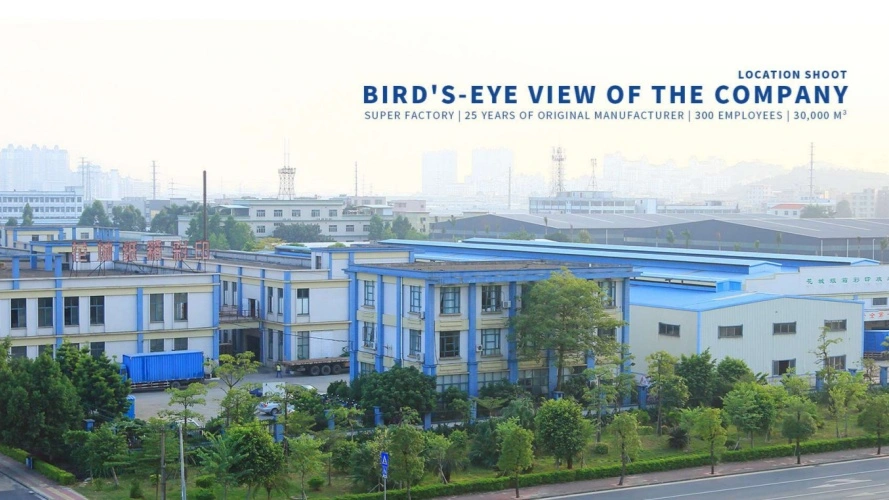Recyclable vs Compostable: Which Paper Packaging Wins
Picture this: You're standing in the grocery store, holding two similar products with seemingly eco-friendly packaging. One boasts "100% recyclable packaging" while the other proudly displays "compostable materials." Your mind races with questions about environmental impact, disposal methods, and which choice truly supports sustainability. This scenario reflects the growing confusion among consumers and businesses alike about recyclable packaging options. As environmental consciousness rises and regulations tighten, understanding the fundamental differences between recyclable and compostable paper packaging becomes crucial for making informed decisions that balance environmental responsibility with practical business needs.

Understanding Recyclable Packaging Materials
Recyclable packaging represents the cornerstone of sustainable packaging solutions, offering businesses and consumers a practical approach to environmental stewardship. Recyclable materials are typically made from plastic, glass and plastic and can be repurposed into new useful products. In the paper packaging industry, recyclable packaging encompasses materials like SBS (Solid Bleached Sulfate), CCNB (Clay Coated News Back), and various chipboard options that can be processed through existing waste management infrastructure. The beauty of recyclable packaging lies in its established infrastructure and widespread acceptance. Most municipalities have developed comprehensive recycling programs that can efficiently process paper-based packaging materials, making recyclable packaging accessible to the majority of consumers worldwide. This accessibility translates directly into higher diversion rates from landfills and more consistent environmental benefits.
-
Benefits and Limitations of Recyclable Paper Packaging
The advantages of choosing recyclable packaging extend far beyond simple waste reduction. Modern recyclable packaging materials maintain excellent structural integrity while offering cost-effective solutions for businesses across various industries. Materials like SBS C1S (Coated One Side) provide exceptional printability and visual appeal while remaining fully compatible with standard recycling processes. These materials support advanced finishing techniques including UV coating, hot foil stamping, and embossing, allowing brands to achieve premium aesthetics without compromising environmental responsibility. Recyclable plastic is often the better choice because there are more recycling facilities and local programs worldwide, as opposed to composting facilities, making it easier to recycle and plastic offers more strength in your packaging. This infrastructure advantage extends to paper packaging, where established collection and processing systems ensure consistent material recovery rates. However, recyclable packaging faces certain limitations that businesses must consider. Contamination from inks, adhesives, and laminations can compromise recyclability, requiring careful material selection and design considerations. Additionally, the recycling process itself requires energy and resources, though significantly less than producing virgin materials.
Exploring Compostable Packaging Solutions
Compostable packaging represents an alternative approach to sustainable packaging, focusing on end-of-life biodegradation rather than material recovery. Compostable materials are organic and will decompose leaving only nutrients that can be returned to the earth. Compostable materials do not leave anything behind. In paper packaging applications, compostable solutions typically utilize unbleached kraft papers, plant-based coatings, and water-based adhesives that break down completely under proper composting conditions. The appeal of compostable packaging lies in its promise of complete biodegradation, theoretically eliminating long-term waste accumulation. Compostable products generally decompose more quickly than biodegradable products. For example, wood-based compostable packaging takes between 45 to 60 days to decompose, whereas compostable plastics take up to 180 days. This rapid decomposition timeline makes compostable packaging particularly attractive for applications where traditional disposal methods may be problematic.
-
Advantages and Challenges of Compostable Materials
Compostable packaging offers unique benefits for specific applications and markets. These materials typically require fewer chemical treatments and synthetic additives, potentially reducing manufacturing environmental impact. For brands targeting environmentally conscious consumers, compostable packaging can provide significant marketing advantages and demonstrate genuine commitment to sustainability. Brown kraft paper exemplifies excellent compostable packaging materials, offering high tensile strength, tear resistance, and authentic aesthetic appeal that resonates with eco-conscious consumers. These materials support various printing and finishing techniques while maintaining complete biodegradability under proper conditions. However, compostable packaging faces significant practical challenges that limit its widespread adoption. Inks, adhesives, and other chemicals present in compost can risk contamination of soil and waterways. And even if they lack undesirable substances, non-organic compostable items such as compostable packaging don't bring the valuable nutrients that their organic counterparts would. Additionally, access to industrial composting facilities remains limited in many regions, potentially negating the environmental benefits if materials end up in standard waste streams.
Infrastructure and Accessibility Comparison
The practical success of any sustainable packaging solution depends heavily on available infrastructure and consumer accessibility. Recycling infrastructure has developed over decades, creating extensive networks of collection, sorting, and processing facilities that serve the majority of global markets. This established system provides predictable pathways for material recovery and reprocessing, ensuring that recyclable packaging can achieve its intended environmental benefits. Recyclable packaging materials like duplex chipboard and CCNB integrate seamlessly with existing waste management systems. These materials undergo efficient sorting processes that separate paper fibers for reprocessing into new packaging products, creating genuine circular economy benefits. The widespread availability of recycling programs means that consumers can dispose of recyclable packaging responsibly regardless of their geographic location. Conversely, composting infrastructure remains significantly underdeveloped in most regions. Industrial composting facilities require specific temperature, humidity, and oxygen conditions to properly process compostable packaging materials. The limited availability of these facilities means that much compostable packaging ultimately reaches standard landfills, where anaerobic conditions prevent proper decomposition and may generate methane emissions.
-
Cost Considerations and Economic Viability
Economic factors play crucial roles in packaging material selection, influencing both immediate costs and long-term sustainability. Recyclable packaging typically offers cost advantages through established supply chains, proven manufacturing processes, and economies of scale. Materials like grey chipboard provide excellent cost-effectiveness while maintaining structural integrity and environmental benefits. The production costs for compostable packaging often exceed those of recyclable alternatives due to specialized materials, limited supply chains, and smaller production volumes. Additionally, the uncertain end-of-life processing costs create financial risks for businesses and municipalities that must manage compostable waste streams.
Performance and Application Analysis
Different packaging applications require varying performance characteristics that influence the choice between recyclable and compostable materials. Recyclable packaging excels in applications requiring durability, moisture resistance, and premium visual appeal. SBS C2S (Coated Two Sides) provides exceptional print quality and structural strength while maintaining full recyclability, making it ideal for luxury packaging applications in cosmetics, electronics, and premium retail markets. The advanced finishing capabilities available with recyclable packaging materials enable sophisticated brand presentations. Spot UV coating combined with embossing creates premium tactile experiences that enhance perceived value while preserving recyclability. Hot foil stamping and holographic foil applications provide anti-counterfeiting features and premium aesthetics that compostable alternatives struggle to match. Compostable packaging performs well in applications where durability requirements are moderate and environmental messaging takes precedence. Food service applications, temporary promotional materials, and single-use packaging benefit from compostable solutions when proper disposal infrastructure exists.
-
Innovation in Recyclable Packaging Technology
Recent advances in recyclable packaging technology have expanded capabilities while improving environmental performance. Collapsible rigid box designs offer innovative solutions that maintain premium aesthetics while reducing shipping and storage costs by over 60% compared to traditional rigid boxes. These patented structures accommodate various product heights while preserving the luxury presentation that brands require. Advanced material formulations like metallic papers provide exceptional visual impact through laminated foils and reflective coatings while maintaining compatibility with specialized recycling processes. These innovations demonstrate that recyclable packaging continues evolving to meet sophisticated performance requirements without compromising environmental benefits.
Making the Right Choice for Your Business
Selecting between recyclable and compostable packaging requires careful evaluation of multiple factors including target markets, disposal infrastructure, performance requirements, and brand positioning. We always recommend recycling over composting due to infrastructure reliability and proven environmental benefits. For businesses seeking sustainable packaging solutions, recyclable packaging typically provides the most reliable path to environmental goals. The combination of established infrastructure, proven performance, and continuous innovation makes recyclable packaging the pragmatic choice for most applications. Materials certification through programs like FSC ensures that recyclable packaging sources align with sustainable forest management practices. Companies should evaluate their specific requirements against available options, considering factors like product protection needs, visual presentation requirements, shipping considerations, and end-market disposal capabilities. Professional packaging engineers can provide guidance on material selection, structural design, and finishing options that optimize both performance and sustainability.
Conclusion
The debate between recyclable and compostable paper packaging ultimately favors recyclable solutions for most business applications. While compostable packaging offers theoretical advantages in complete biodegradation, the practical realities of infrastructure limitations, cost considerations, and performance requirements make recyclable packaging the more viable sustainable choice. Established recycling systems, proven material performance, and continuous technological innovations position recyclable packaging as the winner in sustainable packaging solutions.
Cooperate with GUANGZHOU FETCHING COLOR PRINTING & PACKAGING LTD.
As a leading China recyclable packaging manufacturer established in 1999, Guangzhou Fetching Color Printing & Packaging Ltd. brings over 25 years of expertise to sustainable packaging solutions. Our 50,000㎡ manufacturing facility employs 300+ professionals and houses advanced equipment including KBA106 UV printing machines, Heidelberg XL162-6L presses, and automated production lines that deliver exceptional quality recyclable packaging.
Our comprehensive product range includes folding gift boxes, display racks, mailer boxes, and specialized collapsible rigid boxes available in three patented sizes. We serve diverse industries including food, cosmetics, electronics, and personal care with customized solutions that meet the highest sustainability standards. With ISO14001, ISO9001, FSC, and Disney certifications, we ensure every project meets stringent environmental and quality requirements.
Whether you need high-quality recyclable packaging, competitive recyclable packaging prices, or China recyclable packaging wholesale solutions, our experienced team provides complete support from consultation through delivery. As your trusted China recyclable packaging supplier, we offer recyclable packaging for sale that combines premium aesthetics with proven sustainability performance. Contact us at public@fetchingprinting.com to discuss your recyclable packaging requirements and discover how our expertise can enhance your brand while supporting environmental responsibility.
FAQ
Q: What makes paper packaging truly recyclable?
A: Paper packaging is recyclable when made from materials like SBS, CCNB, or kraft paper without excessive plastic coatings or non-removable adhesives that contaminate the recycling process.
Q: Can compostable packaging go in regular recycling bins?
A: No, compostable packaging should not go in recycling bins as it can contaminate recyclable materials and requires specialized industrial composting facilities for proper processing.
Q: Which option costs less for businesses long-term?
A: Recyclable packaging typically costs less due to established supply chains, proven infrastructure, and economies of scale, while compostable packaging often carries premium pricing.
Q: How do I know if my local area can handle compostable packaging?
A: Check with your municipal waste management services to confirm if industrial composting facilities exist in your area that can properly process compostable packaging materials.
References
1. Environmental Protection Agency. "Frequently Asked Questions about Plastic Recycling and Composting." US EPA Sustainable Materials Management.
2. Packaging Technology Research Institute. "Sustainable Packaging Materials: Performance and Environmental Impact Analysis." Journal of Packaging Science & Technology.
3. International Association of Packaging Research Institutes. "Recycling Infrastructure and Material Recovery Rates in Global Markets." Sustainable Packaging Review.
4. Forest Stewardship Council. "FSC Standards for Responsible Paper Packaging Production." FSC Certification Guidelines for Packaging Materials.

Based on your location and order quantity, you will have the opportunity to receive a limited time free shipping promotion!

Corporate Purpose
